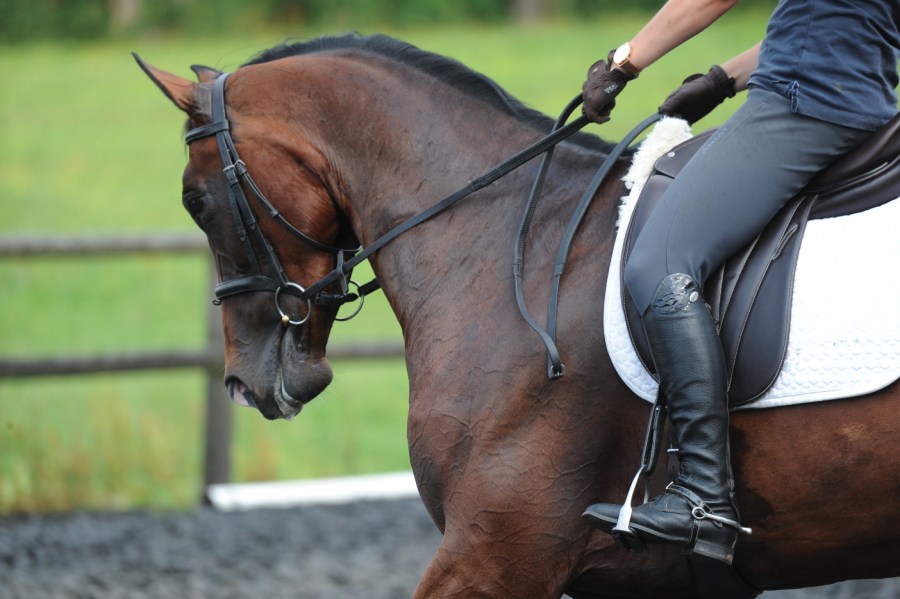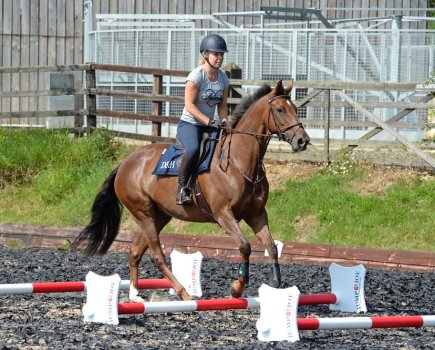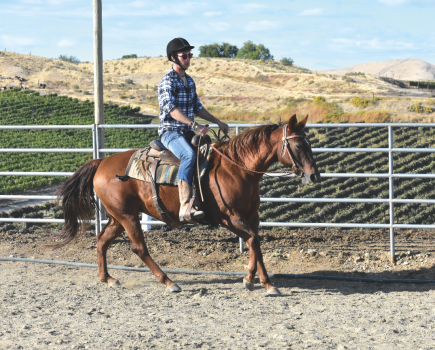When was the last time a horse stood on your foot? It happens to every owner and rider at some point, and so you’ll know how vulnerable your feet can be when handling horses from the ground. However, that’s not the only potential place for injury. Your feet also impact on your safety in the saddle — and it’s a fairly significant one at that, writes Rhea Freeman.
As part of the British Equestrian Trade Association’s (BETA) Summer of Safety, Your Horse has teamed up with executive director Claire Williams and chief medical officer Dr Diane Fisher to talk about how to keep equestrians safer both in and out of the saddle. In this article, we’re discussing feet.
Why does footwear matter?
Horses can weigh more than half a tonne, and when that weight is applied to a human foot, the pressure per inch can cause serious pain, discomfort and injury.
“In the foot, there are lots of small bones,” says Dr Diane, who explains that a person’s foot is divided into three areas:
- The forefoot, which contains the five toes (phalanges) and the five longer bones (metatarsals).
- The midfoot, which is a pyramid-like collection of bones that form the arches of the feet. These include the three cuneiform bones, the cuboid bone, and the navicular bone.
- The hindfoot, which is made up of the talus bone, the calcaneus and the bottom end of the tibia and fibula to form the heel and ankle joint.
“As all the bones in the foot are designed to work together, when any bone is damaged, it changes how the whole foot functions, so we need to try and protect our feet,” warns Dr Diane.
“In many cases, we can’t completely prevent any form of injury, but having the correct footwear, such as steel toe-capped safety boots up to the correct standards, have the potential to reduce the severity of an injury.”
Always keep your whole foot covered
There are an increasing amount of stylish yard boots and riding boots that have steel toe caps integrated into the design to offer additional protection, but make sure when buying a pair that the whole boot is certified to the relevant standard.
If safety boots aren’t for you, wearing boots that cover the whole foot still offer some protection. No matter how warm it is this summer, make sure your feet are adequately protected — and never wear flip flops.
Every year, there are pictures shared on social media of stomach-churning injuries that are the result of horse’s hooves and their owner’s bare feet coming into contact.
“The problem isn’t just the weight of the horse — many are shod and their shoes can remove the skin on your foot entirely, which creates a very complicated and vulnerable fracture that is at risk of serious or life-threatening infection,” states Dr Diane.
“You may end up very unwell, with a lasting deformity or needing amputation, so ditch the flip flops when you’re visiting the yard.”
Related to this…
- ‘Injuries have long-lasting effects’: why riders need to do more to protect their hands and shoulders
- ‘Detail is important’: how to get the medical help you need after a riding fall or incident on the ground
Prevent your foot getting stuck in the stirrup
How your boot sits in the stirrup iron is another important safety consideration.
“You need a smooth sole and defined heel on the boot, but it’s also essential to make sure there’s enough space on either side of your boot in the stirrup,” explains Claire Williams.
“There should be up to half-an-inch of space between the iron and the widest part of your boot. The idea is that this amount of space prevents your foot getting stuck in the stirrup, but there’s not so much space that your foot could slide through the stirrup, as that can also lead to some horrific injuries.”
The possibility of being dragged should your foot become stuck or slip through is a very real one and can be terrifying for all concerned — horse, rider and spectator.
You might be thinking, “but safety stirrups help”, and in some cases they could do, but as there’s no formal standard for safety stirrups, consumers need to be aware of what they’re buying and use the ‘safety’ functionality to support correctly-sized stirrups, rather than in place of.
Are ‘safety stirrups’ safe?
In a recent BETA survey, 40% of riders surveyed used safety stirrups. For the 60% who didn’t, the main reason given was uncertainty about which stirrups were actually safe. There is currently no standard for safety stirrups, although BETA is starting the process towards one being written.
This would provide riders some assurance that what they are buying will be fit for purpose. Interestingly, over half of non-users said that a standard would make them more likely to purchase safety stirrups in the future.
In the meantime, if you decide to buy a safety stirrup, be very sure of what that item is offering you and that it was designed as a safety stirrup. Some stirrups are often described as being safe due to them having a particular design shape, rather than them having any built in release mechanism, which tends to be the main feature of safety stirrups.
Typically, a safety stirrup has a built-in mechanism to release your foot when triggered appropriately either by amount of pressure or degree of angle or a combination of both. The best known for many years was the Peacock stirrup with its band from the top to the side, but its use was limited to either children or very light adults.
There is now an increasingly large range of stirrups that open at the side or bottom, or even some which have to be used with a specially designed boot which is attached to the foot plate of the stirrup by magnet or mechanism and releases in response to a change of angle or increase of force. Do, however, check the rules of your discipline if competing, as some do not allow stirrups where the foot is attached to the foot plate.
Report your riding falls and accidents
 At last year’s Your Horse Live, BETA launched an accident reporting form to help collate and learn from accidents involving horses, both on the ground or as a result of a fall. Information gathered via the form will be studied and used to help inform the manufacturers of safety equipment, helping support the continued evolution of safety equipment in line with the needs of horse owners and riders.
At last year’s Your Horse Live, BETA launched an accident reporting form to help collate and learn from accidents involving horses, both on the ground or as a result of a fall. Information gathered via the form will be studied and used to help inform the manufacturers of safety equipment, helping support the continued evolution of safety equipment in line with the needs of horse owners and riders.
To access the BETA Rider Accident & Equipment Report Form, scan the QR Code (left) or find it here.
For more information on BETA, see www.beta-uk.org. To get involved with the Summer of Safety, follow BETA on Instagram and Facebook









